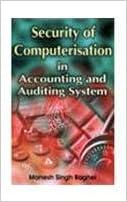Question
When an acquirer assesses a potential target, the price the acquirer is willing to pay should be based on the value of: The target firms
When an acquirer assesses a potential target, the price the acquirer is willing to pay should be based on the value of:
The target firms total corporate value (debt and equity)
The target firms equity
The target firms debt
Consider the following scenario:
Ziffy Corp. is considering an acquisition of Keedsler Motors Co., and estimates that acquiring Keedsler will result in incremental after-tax net cash flows in years 13 of $14.00 million, $21.00 million, and $25.20 million, respectively.
After the first three years, the incremental cash flows contributed by the Keedsler acquisition are expected to grow at a constant rate of 6% per year. Ziffys current beta is 1.60, but its post-merger beta is expected to be 2.08. The risk-free rate is 5%, and the market risk premium is 7.10%.
Based on this information, complete the following table by selecting the appropriate values (Note: Do not round intermediate calculations, but round your answers to two decimal places):
| Value | |
|---|---|
| Post-merger cost of equity | ? |
| Projected value of the cash flows at the end of three years | ? |
| The value of Keedsler Motors Co.s contribution to Ziffy Corp. | ? |
Keedsler Motors Co. has 6 million shares of common stock outstanding. What is the largest tender offer Ziffy Corp. should make on each of Keedsler Motors Co.s shares?
$25.65
$20.52
$30.78
$30.79
Step by Step Solution
There are 3 Steps involved in it
Step: 1

Get Instant Access to Expert-Tailored Solutions
See step-by-step solutions with expert insights and AI powered tools for academic success
Step: 2

Step: 3

Ace Your Homework with AI
Get the answers you need in no time with our AI-driven, step-by-step assistance
Get Started


